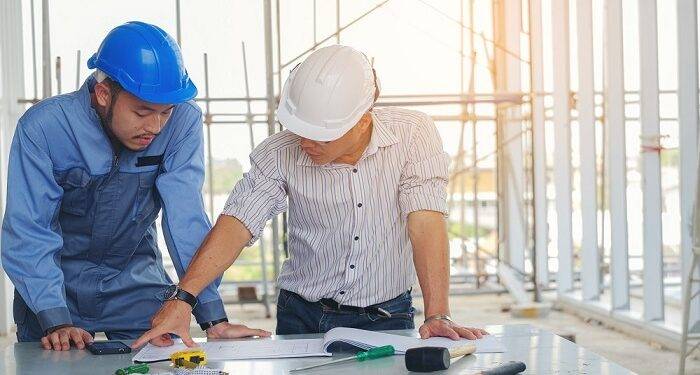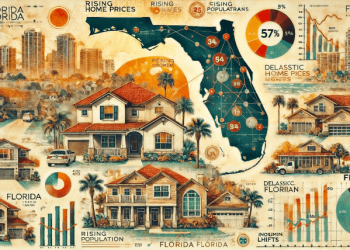Practical recommendations on ways to achieve a successful result when realizing the most cherished desire of a person.
The blue dream of every person is to have his own house with a path to the porch, a lawn and a flowering bush in front of the window. About ten years ago, the ones closest to the territory began to be built up not just with cottages, but with more capital buildings, designed, apparently, for the permanent residence of their owners. The imaginations of people who carry out their plans and spend money on creating objects of tastelessness and absurdity as gloomy monuments of our transitional period – the time between the destruction and the creation of the culture of a new society – are surprising. If earlier the state system regulated and created that faceless appearance of housing boxes, where residents were housed in cells-apartments,
Yes, of course, beautiful houses are also built, but very rarely. Basically, these are objects of serious construction companies and experienced architects, as a rule, it costs a lot. Most of the houses are built by hired crews, which obviously affects the result. We can say with certainty: more than 2/3 of all recently built private residential buildings do not withstand any criticism and demonstrate the lack of taste of both rich and low-income developers. Most often in such houses there is a noticeable elementary lack of logic and culture, which is explained by a lack of experience in arranging one’s home.
In this publication, we tried to make a logical chain of steps, actions and tips, following which you may be able to avoid mistakes and build the house of your “dream”, which will optimally match your lifestyle and harmonize with the landscape. These recommendations are for future homeowners.
1. Awareness of the need.
In order to build a house, you need to realistically assess your capabilities and think through the logic and sequence of actions. Most often, the circumstances in which you are today can change and the time and money spent will not lead to the desired result, so weigh all the pros and cons. Assessment of one’s own forces should be carried out taking into account unforeseen circumstances. It is very important that you want to achieve your goal – to bring your plans to the end.
The visual image of the future house should be presented to you as a single whole, in which the aesthetic appearance is harmoniously combined with cozy interiors and convenient planning. This building should not look like a fortress in the literal sense of the word or a pile of stacked bricks covered with a roof. The house should please the eye and evoke positive emotions, then you will get satisfaction from your own work. If you need a house for prestige, and not for real life, then this can be another monument of “absurdity”, just built your account. Realize that you will spend part of your life in this house.
2. Geography lesson.
A bad mark in geography, which life itself will give you, can also be the result of ill-considered decisions. The location of your future home, convenient transport accessibility, attractiveness of the surrounding nature and neighboring houses – these circumstances will definitely affect the fate of the construction and your desire to live in this house in the future. The proximity factor is not always decisive. Sometimes the location of a city apartment – in one sector, and a country house – in the opposite creates much greater difficulties than the location of a house somewhere in the Tula or Kaluga regions, but in a beautiful and ecologically clean place, where there is a reservoir and a forest area. In addition, densely built-up areas, when homes are almost adjacent to each other, create an unpleasant feeling of a “stone jungle” – almost like in a city.
Thus, before you get down to business, think over all the “geographical” aspects of your future place of residence, you must love these places!
3. Factors of provision.
When building a house in which you and your children will live in the 21st century, of course, comfort factors, which are provided by engineering communications, are necessary. Modern equipment allows you to build a house completely on autonomous supply, but this is associated with additional costs. The optimal option is the availability of electricity, gas, a source of drinking water and an access road to the site. Be sure to plan expenses for equipping the house with normal “city” amenities – a toilet, a bathroom with a shower and hot water, sewage with a sewage treatment system, heating and high-quality water. By solving these problems once and for all, you will provide for your home and yourself for many years. The ideal option is to first draw up all the necessary communications, and then build the house.
4. Functional use.
When planning future use at home, as a rule, developers greatly exaggerate the real need for functional rooms. Those cases when relatives or guests come, for which additional rooms are built, are quite rare, and the cost of each square meter of your house is comparable to the monthly income of an average family. Why stress and invest extra money in rarely visited real estate? If everyone could realistically imagine how often the house will be used and how much space is needed for this, then the saved money would be spent at least on the quality of finishing, engineering equipment or other useful things. Perhaps, for this reason, large houses are rarely beautiful and complete!
A reasonable approach to the functional planning of the future house is the basis of construction success, the opportunity to achieve a good result!
5. Volume of the house.
If we evaluate the projects ordered from architects, then a house with an area of 200-250 m2 is considered average. Large houses – from 300 m2 and more. Customers rarely turn to an architect for a project of a small compact house, probably to save money and their own confidence “that we should build a house.” As a result, “masterpieces” of artistic amateurism of the master and his voluntarily hired assistants are assembled in mass order. And even with a lot of money invested in the massive volume of the building, one can often see either the absence of a project or the fact that it was made by an amateur.
When choosing the volume of the building – be guided by common sense! Do not build large buildings, they are rarely needed and not at all practical. “Less is better”! It is more important to take into account and implement to the end the entire structure of costs – for the design, construction, finishing, landscaping, equipment and facilities of the house, as well as predict the costs for further operation. Practice shows that most of the built large houses are often empty. You can’t live in them, as it were. So is it necessary to invest money in an unnecessary volume?
6. Cost.
Carefully considering each step of progress towards the set goal, it is necessary to realistically assess one’s financial capabilities. How much can a house cost? An exact answer to this question can only be given by a specific estimate for a detailed project, but approximate cost indicators are known from the experience of real objects.
7. Construction of the house.
Choosing the material from which the house will be built is not an easy task. Each option has its advantages and disadvantages. Building a brick house is the most difficult and long process. Beam, wooden or frame-board – more technological. Modern wall structures (such as “isodom – 2000”) or combined materials with external insulation are progressive systems with high thermal insulation efficiency. In all these cases, the following circumstances must be taken into account:
- the house must have a reliable foundation with waterproofing, built according to all the rules;
- the construction of the walls must be carried out in compliance with building regulations and rules by competent builders and with the unconditional fulfillment of technological stages;
- the roof is not only the protection of the house from bad weather, but also the most important architectural element, due to which its construction and the coating itself must be made in the most thorough manner, this is something that should not be saved;
- any construction of the house you choose is not completely fireproof, since there are always things made of combustible materials in the house. Protection against the danger of fire is provided by all known measures and elementary precautions.
- engineering equipment is equally successfully used in all types of buildings;
- each type of material used in the construction of the house has its own traditional aesthetics and architectural expressiveness, which should be used skillfully and tastefullyOrganization of 8. all works.
The chain of sequential actions described in this article leads to the need to order a project from an architect or buy a ready-made typical project before starting construction. In addition, it is advisable to order an estimate to take into account all the estimated costs and volumes of materials. Of course, if you contact a specialized company, the quality of construction promises to be better, but even with independent management, you can achieve a good result if you regularly consult with specialists during the work or hire an experienced kansas city siding contractors. Do not forget to draw up all contracts in writing and keep records of costs, used materials, tools and components. The main thing is to act thoughtfully and try to deal with competent specialists.











